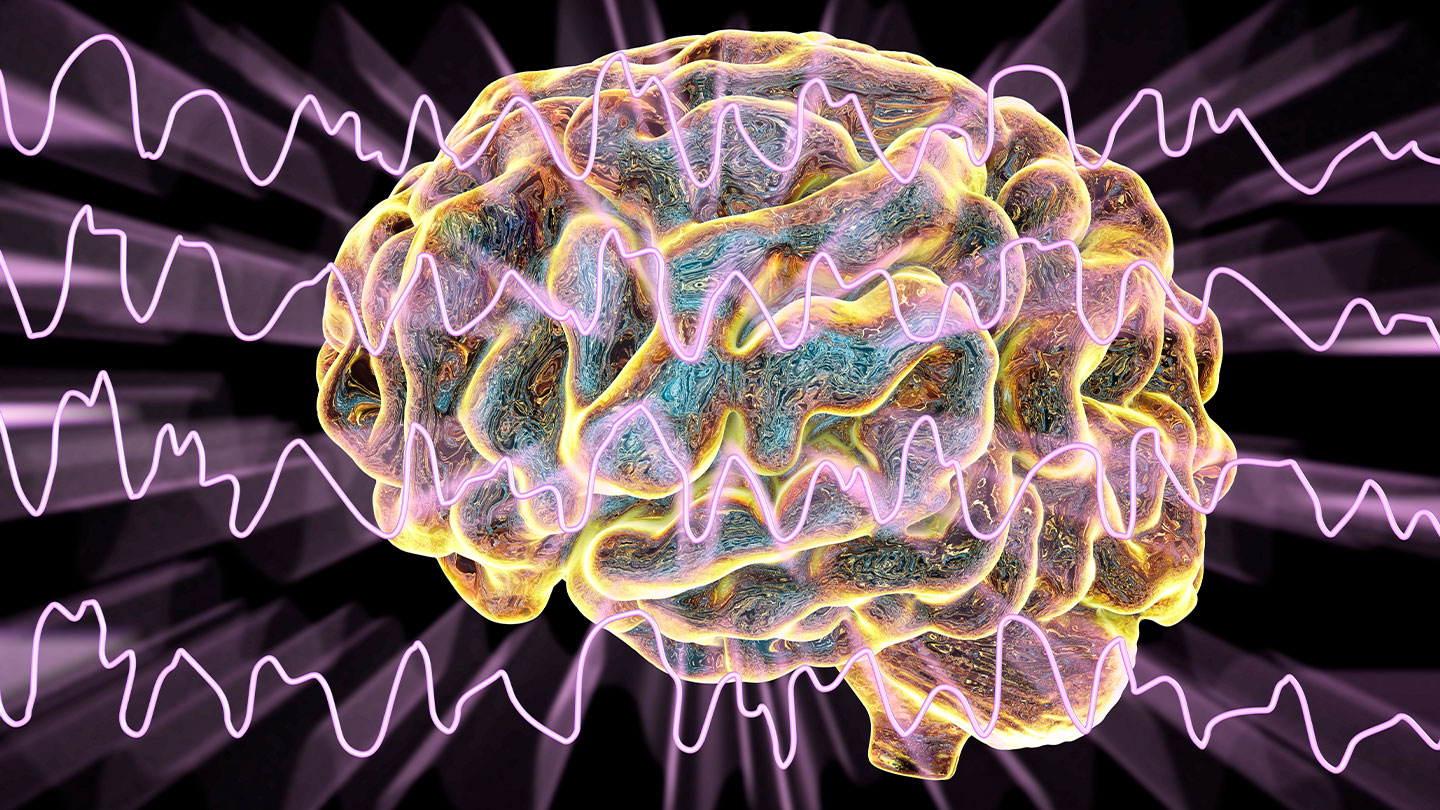A brain-monitoring device may one day take the guesswork out of anesthesia |
 |
| Combining brain-monitoring equipment with drug-dosing algorithms could one day help anesthesiologists give patients just the right dose of anesthetic to stay sedated during medical procedures.KATERYNA KON/SCIENCE PHOTO LIBRARY/Getty ImagesBy Erin Garcia de JesúsA new brain-monitoring device aims to be the Goldilocks of anesthesia delivery, dispensing drugs in just the right dose. No physician wants a patient to wake up during surgery — nor do patients. So anesthesiologists often give more drug than necessary to keep patients sedated during medical procedures or while on lifesaving machines like ventilators.But anesthetics can sometimes be harmful when given in excess, says David Mintz, an anesthesiologist at Johns Hopkins University. For instance, elderly people with cognitive conditions like dementia or age-related cognitive decline may be at higher risk of post-surgical confusion. Studies also hint that long periods of use in young children might cause behavioral problems. “The less we give of them, the better,” Mintz says.An automated anesthesia delivery system could help doctors find the right drug dose. The new device monitored rhesus macaques’ brain activity and supplied a common anesthetic called propofol in doses that were automatically adjusted every 20 seconds. Fluctuating doses ensured the animals received just enough drug — not too much or too little — to stay sedated for 125 minutes, researchers reported October 31 in . The study is a step toward devising and testing a system that would work for people.Normally, an anesthetic dose is based on body measurements like weight and age. But that calculation is not a perfect science. There is no clear relationship between dose and likelihood that patients will be fully anesthetized with propofol and similar drugs, says Mintz, who was not involved with the new study. So anesthesiologists give amounts on the higher end of the spectrum to ensure their patients remain unconscious.It’s not acceptable for doctors to work with doses that aren’t necessarily going to work for everyone, Mintz says. “You’re shooting for the 99th percentile… like 99.999” percent of patients should not wake up.While patients are under anesthesia, physicians keep a close eye on indirect markers of consciousness such as breathing rate and heart rate. Anesthetics like propofol also alter brain waves, so tracking brain activity can help anesthesiologists keep tabs on patient awareness, says neuroscientist and anesthesiologist Emery Brown (). In practice, however, few physicians are trained to do so.Brown and colleagues developed a device to do that work for anesthesiologists. The system requires limited human input, combining brain-monitoring medical equipment with a computer that uses algorithms to determine how the body processes propofol. Every 20 seconds, the machine calculates how much drug is needed to maintain a preset level of brain activity that previous work has shown is indicative of unconsciousness in macaques.After computer simulations suggested the model would work, the team completed nine trials with two macaques. The researchers first manually administered the anesthetic for half an hour. Then they let the automated delivery system take over for 125 minutes. In all nine experiments, the system accurately shifted the macaques between a lighter sedation and a deeper sleep, each lasting 40 or 45 minutes.The system isn’t the first of its kind to be developed. Some existing devices — which are not approved for use in the United States — can distribute a single, predetermined amount of drug. But because the new Goldilocks version relies on feedback from the brain, it’s a bit like flying a plane on autopilot, says Brown, of MIT, Massachusetts General Hospital and Harvard Medical School. Just as autopilot is key for helping pilots navigate long flights, using a brain-monitoring machine to automatically adjust anesthesia doses would help during long surgeries and most likely reduce patients’ post-surgery delirium.“Doesn’t mean the pilot can decide to take the day off,” Mintz says. But because machines don’t get sleepy or need a bathroom break, the new device “is a very helpful tool … because it complements human weakness.” Next steps include repeating the experiments with more animals to refine the system and make the brain monitoring steps less invasive. The device from the study measured brain activity from electrodes that had been directly implanted in the monkeys’ brains, Brown says, but the goal is to switch to using EEG electrodes that attach to the scalp.Consciousness is difficult to define, and even EEGs aren’t a perfect tool, Mintz says. People with brain diseases, for instance, may have EEGs that look slightly different than people with healthy brains. Still, blending technology with anesthesiologists’ watchful eyes can take the guesswork out of hitting the sweet spot that slips people into oblivion.Questions or comments on this article? E-mail us at feedback@sciencenews.org | Reprints FAQS. Chakravarty . Closed-loop control of anesthetic state in nonhuman primates. . Published online October 31, 2023. doi: 10.1093/pnasnexus/pgad293.A.M. Bastos . Neural effects of propofol-induced unconsciousness and its reversal using thalamic stimulation. . Published online April 27, 2021. doi: 10.7554/eLife.60824. Erin I. Garcia de Jesus is a staff writer at . She holds a Ph.D. in microbiology from the University of Washington and a master’s in science communication from the University of California, Santa Cruz.Your Giving Tuesday gift will help advance our 100-year legacy of through . Give todaywill be matched up to $15,000You will help expand our already extensive Outreach and Equity programming, which supports science teachers and with grants, training, and resources to enhance mentorship and scholarship.And, of course, your Giving Tuesday gift will , conduct original research, compete in local science fairs, and perhaps even share their projects with a broader audience at one of the Society’s world-class competitions.Science News was founded in 1921 as an independent, nonprofit source of accurate information on the latest news of science, medicine and technology. Today, our mission remains the same: to empower people to evaluate the news and the world around them. It is published by the Society for Science. |
Nov 26th, 2023 |
| source |